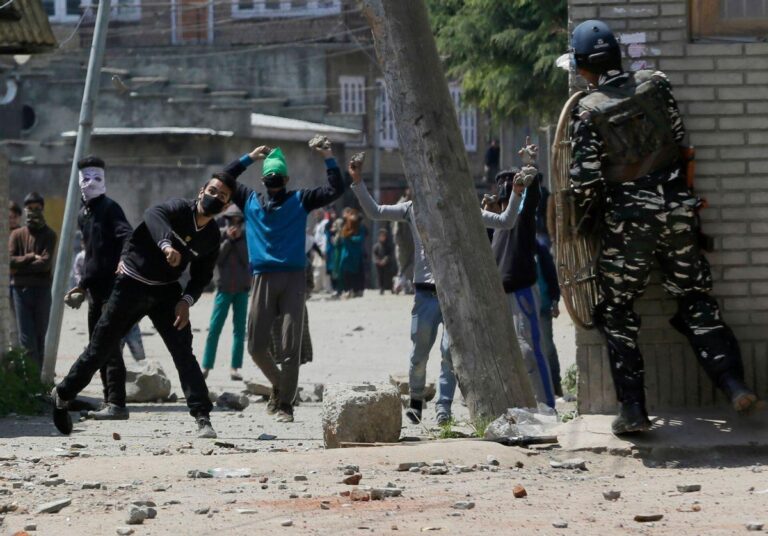Introduction:
In recent times, the Kashmir region has become a central point of rising tensions between India and Pakistan, two nuclear-capable nations with a long-standing history of discord. the stunning landscapes of this contested area, characterized by majestic mountains and a vibrant cultural legacy, mask the intricate geopolitical significance it holds. Both countries assert their claims over Kashmir, leading to repeated clashes, diplomatic impasses, and a humanitarian crisis that affects millions of civilians. As global observers keep a vigilant eye on developments in the region, it is crucial to comprehend the various dimensions of the Kashmir conflict—including historical grievances, national identities, and recent policy changes.This article examines the essential factors influencing the current situation in Kashmir while considering its implications for regional stability and international peace.
Historical Background of the Kashmir Conflict
The roots of the Kashmir conflict are entrenched in historical and political complexities that trace back to 1947 when British colonial rule ended in India. Central to this issue is Jammu and Kashmir’s princely state; its ruler at that time, Maharaja Hari Singh faced an arduous choice regarding whether to align with India or Pakistan following partition. The situation escalated when tribal forces from Pakistan invaded Jammu and Kashmir prompting Hari Singh to seek military support from India—this led to signing an Instrument of accession which formalized Jammu and Kashmir’s integration into India. This pivotal moment ignited armed confrontations between both nations setting off over seventy years of disputes regarding this territory.
The geopolitical relevance of Kashmir is amplified by its diverse religious demographics as well as its strategic positioning within South Asia. Key stakeholders involved include:
- India: Claims sovereignty over Jammu & Kashmir based on historical agreements.
- Pakistan: Challenges India’s authority citing demographic realities alongside historical claims.
- Kashmiri Separatists: A coalition comprising political factions advocating for either independence or unification with pakistan.
The intermittent ceasefires coupled with sporadic violence underscore ongoing challenges toward achieving lasting peace in this volatile region—a flashpoint influenced by nationalist fervor as well as international relations primarily between these two countries which often shape broader geopolitical dynamics across South Asia.
Geopolitical Consequences of Ongoing Tensions
The persistent unrest in Kashmir transcends local boundaries; it carries importent geopolitical ramifications that resonate globally. With major players like China joining discussions alongside India and Pakistan—the stakes are considerably high.This intricate web woven from historical grievances along with territorial disputes fuels an ongoing cycle that threatens stability throughout South Asia. The area’s strategic location near vital trade routes further complicates matters as external powers evaluate their influence amid escalating hostilities. Analysts caution that continued turmoil could lead towards militarized confrontations involving neighboring states thereby impacting international relations beyond just regional confines.
A comprehensive understanding requires consideration across several dimensions including:
- Historical Context: A legacy marked by conflict since british India’s partition in 1947.
- International Interests: The involvement from global powers such as Russia or China shaping regional dynamics substantially.
- Eeconomic Ramifications: Potential disruptions affecting trade flows among nuclear-armed states could have far-reaching consequences.
- Civilian Impact:The dire circumstances faced by innocent civilians caught amidst military operations must be addressed urgently.
Navigating through these precarious waters necessitates critical responses from international organizations aimed at fostering dialog among conflicting parties—below is an overview highlighting key institutional reactions thus far:
| Institution | Response |
|---|---|
| United Nations | Advocates for peaceful negotiations along with monitoring human rights violations . |
| European Union | Encourages restraint while promoting dialogue between both nations . |
| Institution Of Islamic Cooperation | Denounces violations against Kashmiri citizens .
Pathways Toward Peaceful Resolution in KashmirThe enduring conflict surrounding Kashmiri territory has persisted for decades profoundly affecting not only local stability but also impacting lives within those borders significantly. Attaining asustainable resolution necessitates grasping multifaceted dynamics at play including past grievances , national identities , along side geopolitics interests involved . Engaging local communities remains paramount fostering grassroots dialogues prioritizing aspirations & needs expressed directly by people living there.< strong considerations include :
Moreover addressing underlying socio-economic challenges fueling unrest such youth unemployment lack access education essential part comprehensive approach should involve<stronginternational stakeholders whose roles could prove critical mediating tensions facilitating cooperation moving forward.The table below highlights potential areas collaborative engagement : conclusion: Navigating Future Prospects for Stability In region ÂThe ongoing strife surrounding Kashmiri territory represents complex deeply rooted issues continuing impact millions residing therein beyond borders too.As geopolitical landscapes shift while both nations assert respective claims careful scrutiny understanding cultural nuances becomes imperative.International community’s response combined perspectives held locally will play pivotal role shaping future outcomes concerning contentious territories.As events unfold staying informed engaged remains essential addressing pivotal issues not only affecting South Asian context but also carrying broader implications towards global diplomacy overall. |




